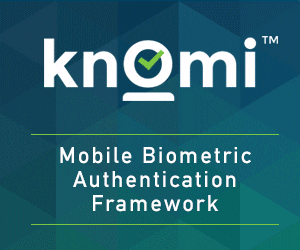
The government market has always been one of the key drivers of the overall biometrics industry. That’s partly because for a long time, the government sector pretty much was the biometrics industry; other areas, like consumer-facing biometrics and FinTech, are much more recent phenomena. But the government sector has also played an outsized role because it is so large and varied, covering everything from national ID to background checks to military science.
Within this huge sector, law enforcement is a standout component. For decades, law enforcement arguably led the biometrics market, ever since police started using tools to uncover fingerprints on crime scenes and evidence. Biometric technology and its law enforcement applications have come a long way since then, so it’s worth taking stock of where this thriving part of the industry is now.
Fingerprints Go Digital
Fingerprint biometrics still play an extremely important role in law enforcement, but the old days of ink-and-paper fingerprinting are quickly receding into history. Things have gone digital, with police agencies building large-scale databases of electronic fingerprint records, and increasingly using handheld devices that allow them to match suspects against those criminal databases out in the field.
This trend is underway all over the world. For example, government authorities in India recently cemented an agreement that will see a new Automated Fingerprint Identification System delivered by NEC; and earlier this year Gemalto won a contract to provide the Uganda Police Force with a Cogent Automated Biometric Identification System that supports fingerprints as well as palm and face biometrics.
Faces are the New Fingerprints

The multimodal support points to the other big trend in law enforcement biometrics: facial recognition. Police use of this technology has exploded in recent years, thanks in large part to AI-driven advances that have delivered sophisticated solutions capable of identifying faces in live video feeds, often even if there are large crowds of people onscreen.
The benefits of this kind of technology to police agents are obvious. In trialing face scanning surveillance technology earlier this year, London’s Metropolitan Police said it enabled them to make three arrests of individuals wanted for violent crimes; and in Toronto, the city’s police chief asserted earlier this year that facial recognition technology had produced potential criminal matches in 60 percent of searches last year, with 80 percent of those potential matches leading to identification.
There has been controversy, of course. Disclosures about Amazon’s sale of facial recognition to police agencies led to an uproar from privacy advocates in America last year, and that has spurred on a greater backlash around the world. But high-profile police authorities in places like New York and the UK have maintained that this technology is a valuable policing tool, and demand among the law enforcement community is not expected to decline.
New Tools, and No Rules

Meanwhile, biometric technologies continue to advance, opening up new applications in the area of law enforcement. TrustStamp, for example, has been working with Attorneys General in Guanajuato and New Mexico on a ‘biometric hashing’ system designed to identify individuals being trafficked across the border while preventing direct links between their faces and personally identifiable information. It’s an approach that could help to fight crime and save victims of trafficking while sidestepping the privacy issues that have come under scrutiny in other police applications of facial recognition technology.
Looking to even more futuristic biometric technology, we have something in development that definitely will be controversial. A New York-based startup called SPARK Neuro has been working on a neurobiometrics system based on a combination of EEG, Galvanic Skin Response, face biometrics, eye tracking, and fNIRS brain imaging that is essentially designed to deliver insights into how a subject is psychologically responding to certain media; and the company says it has won a grant from the Department of Defense to study how this can be used in counter-terrorism.
This ties in with a recent report from Zion Market Research asserting that “brain fingerprinting” technologies based on brainwave analysis are increasingly going to be used to identify terrorists and criminals, with the brain fingerprinting market expected to see significant growth over the next several years thanks to demand from the military and law enforcement sectors.
It’s speculation, of course. But the story of the law enforcement biometrics market over the last several years – and indeed the last several decades – has been one of rapid technological advancement that has delivered new tools to police and raised new issues about privacy and related rights at the same time. This is part of why law enforcement biometrics are so exciting, and such a significant component of the larger government biometrics market.
*
Government Biometrics Month is made possible thanks to our sponsors: NEC Corporation of America & Aware, Inc
–
September 5, 2019 – by Alex Perala









Follow Us